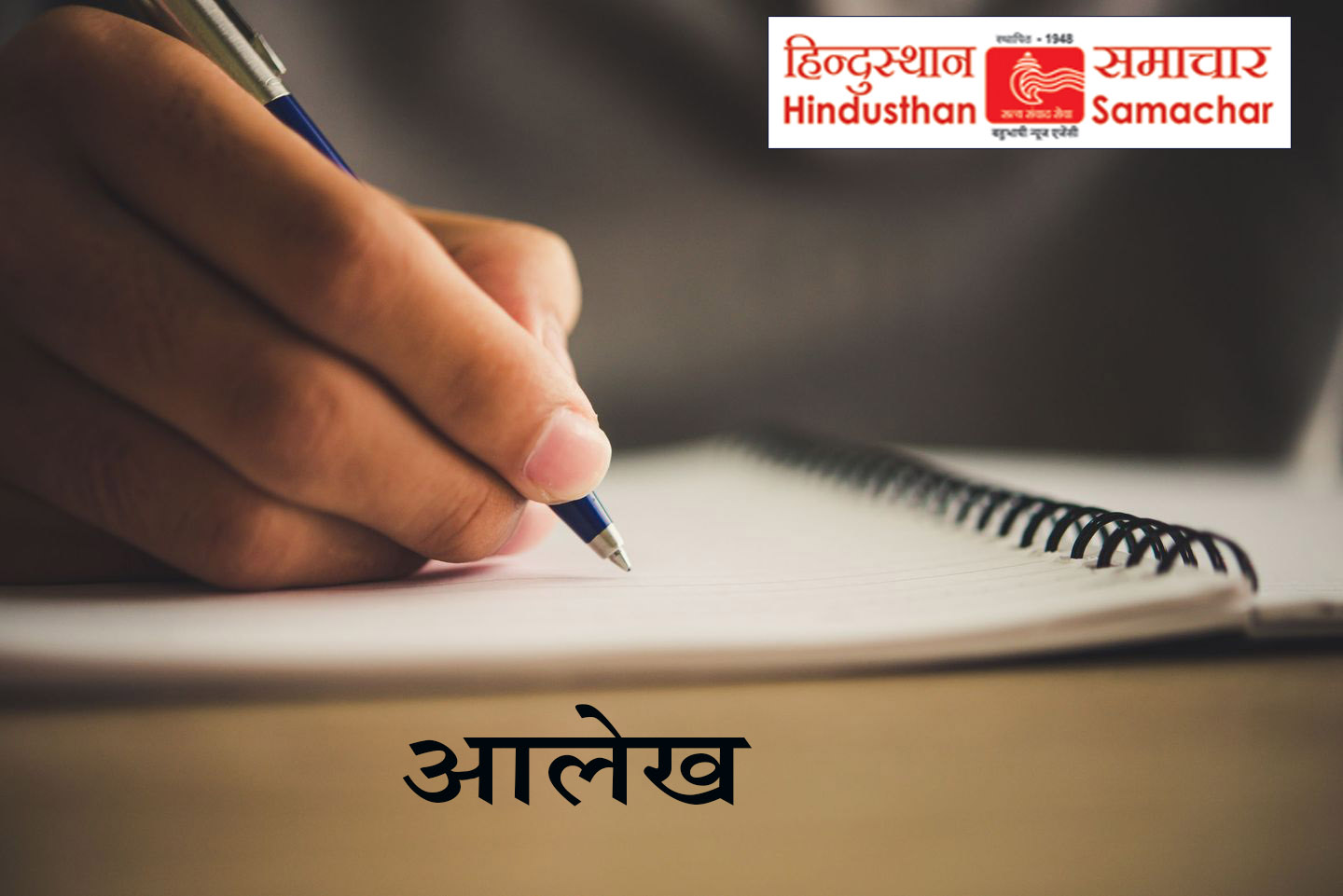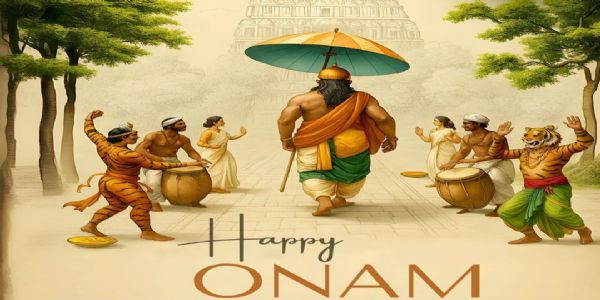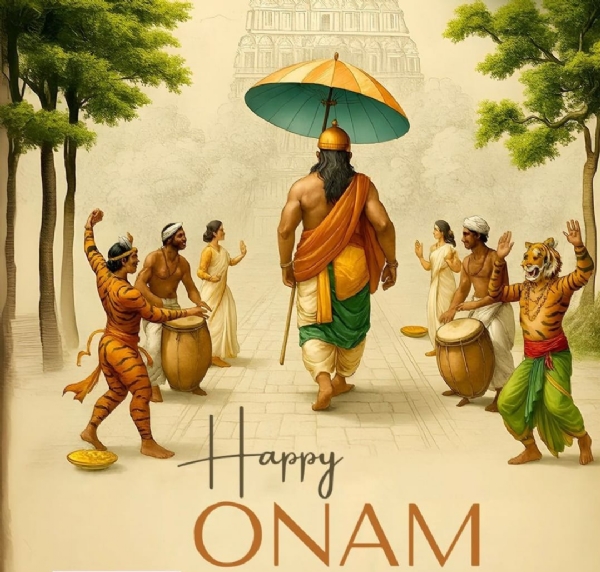
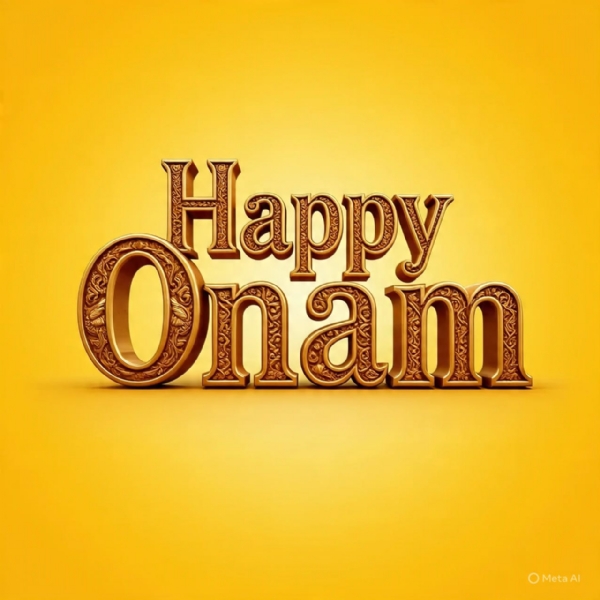
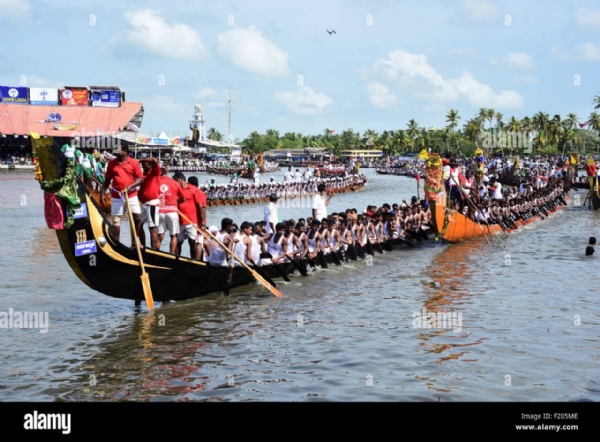
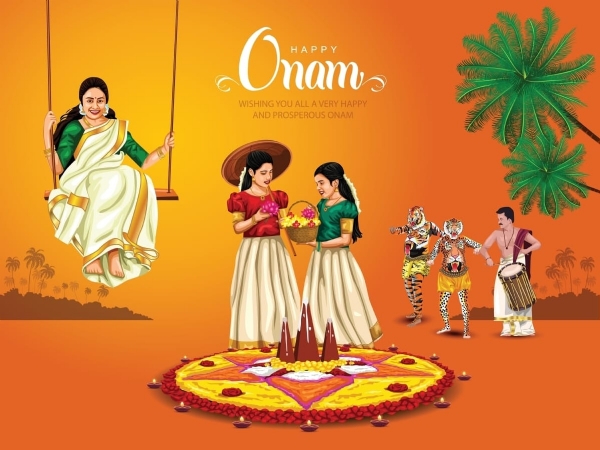
*By Dr. Devan
Onam is one of the most celebrated festivals of Kerala, the lush green coastal state of India known as God’s Own Country. It transcends the boundaries of religion, caste, and creed, uniting people in joy, festivity, and cultural pride. Onam is not merely a festival but a celebration of Kerala’s heritage, its agrarian roots, and the eternal values of equality, prosperity, and community.
The essence of Onam lies in its story: the return of Mahabali, the mythical Asura king who once ruled Kerala with justice, kindness, and prosperity. Though dethroned by Lord Vishnu in his Vamana avatar, Mahabali was granted permission to visit his people once a year. Onam marks this annual homecoming. It is a ten-day festival, with each day carrying significance, rituals, and a distinct cultural flavor.
The Legend of Mahabali
The heart of Onam is the story of Mahabali. He was an Asura king, but unlike most depictions of Asuras as tyrannical, Mahabali was known for his fairness, generosity, and commitment to his people. Legends say that under his reign, there was no poverty, no crime, and no injustice. People lived in harmony, and prosperity flourished in every home.
This utopian reign, however, made the Devas insecure. They approached Lord Vishnu, who incarnated as Vamana, a dwarf Brahmin. Vamana approached Mahabali during a ritual sacrifice and asked for three paces of land. The humble and generous king agreed without hesitation. Vamana then grew into a cosmic figure and measured the earth in one step, the heavens in the second, and with no space left, Mahabalip offered his own head for the third. Vishnu, moved by his devotion and humility, sent Mahabali to the netherworld but granted him the boon of returning once a year to visit his beloved subjects.
Onam celebrates this visit. People of Kerala prepare themselves with grandeur to welcome their king and show him that his land continues to thrive.
The Agrarian Roots of Onam
Onam is deeply tied to Kerala’s agricultural cycle. It coincides with the harvest season, particularly of rice, which has been the staple of the land. The monsoon showers recede by August-September, leaving the earth fertile, green, and fragrant. Farmers rejoice at the abundance of crops, and families gather to thank nature for its blessings.
Thus, Onam is both a harvest festival and a cultural marker of Kerala’s prosperity. The greenery, the blooming flowers, the overflowing granaries, and the vibrant folk art all testify to this agrarian connection.
The Ten Days of Onam
Onam is celebrated over ten days, each with its rituals and customs:
Atham – The festival begins with Atham, marked by the making of the first Pookkalam (floral carpet). Traditionally, only yellow flowers are used on the first day.
Chithira – More flowers are added to the Pookkalam. Homes are cleaned and decorated.
Chodhi – The Pookkalam grows larger, and shopping begins. New clothes (Onakkodi) are purchased.
Visakam – One of the most auspicious days, as families prepare for the grand feast (Onam Sadya). Competitions and cultural programs start.
Anizham – Boat races (Vallamkali) begin in many places.
Thriketa – Families gather, and celebrations intensify.
Moolam – Sadya begins in temples and public places, open to everyone.
Pooradam – Idols of Mahabali and Vamana are placed in the center of the Pookkalam.
Uthradam – Known as the first Onam, families buy vegetables and finalize preparations.
Thiruvonam – The most important day. The grand Sadya is served, rituals are performed, and festivities peak.
Even after Thiruvonam, celebrations continue for two more days—Avittom and Chathayam—with snake boat races and cultural fairs.
Pookkalam: The Floral Carpet
One of the most iconic elements of Onam is the Pookkalam. Families create intricate floral patterns at the entrance of their homes to welcome Mahabali. Each day, fresh flowers are added, and the design grows in size and complexity. The Pookkalam is not just decoration; it represents harmony, creativity, and the collective spirit of family members working together.
Vallamkali: The Snake Boat Race
Another highlight of Onam is the Vallamkali, or snake boat race, held in the backwaters of Kerala. Long, narrow boats rowed by hundreds of men in perfect rhythm glide through the waters, cheered on by spectators. The races symbolize unity, teamwork, and Kerala’s enduring bond with its rivers and backwaters.
Onam Sadya: The Grand Feast
Perhaps the most anticipated aspect of Onam is the Sadya, the traditional vegetarian feast served on a banana leaf. A full Sadya can have up to 26 dishes, including rice, sambar, avial, olan, thoran, pachadi, puli inji, pickles, and the beloved payasam. Each dish carries symbolic value and showcases the diversity of Kerala’s cuisine. The Sadya is not only about food but also about equality—everyone, regardless of status, sits together to share the same meal.
Onakalikal: Games and Festivities
Onam is not just about rituals but also games and entertainment. People play Onakalikal—traditional games such as tug-of-war (Vadamvali), ball games, archery, and indoor games like dice and cards. Folk dances like Thiruvathira, Pulikali (tiger dance), and Kummattikali add to the festivity. The streets come alive with music, drums, and colorful processions.
The Spirit of Onam
Onam’s true essence lies in its spirit of unity. Though rooted in Hindu mythology, it is celebrated by Christians, Muslims, and people of all faiths across Kerala. Temples, churches, and mosques alike host cultural events, distribute food, and participate in festivities. It is a secular festival in the truest sense.
The festival reflects Kerala’s core values—hospitality, inclusiveness, respect for nature, and communal harmony. It is a time when social barriers melt, and people come together to rejoice in shared heritage.
Onam in the Modern Era
In today’s world, Onam has grown beyond Kerala. Malayali communities across India and abroad celebrate it with equal zeal. Cultural associations host Onam Sadya, organize boat races, and conduct traditional art performances, keeping the spirit alive far from home.
However, modern influences have also changed Onam. Commercialization, urban lifestyles, and fast-paced living sometimes dilute the depth of tradition. Yet, at its heart, Onam continues to remind people of their roots, their cultural pride, and the enduring bond of community.
Lessons from Onam
Onam offers profound lessons:
Equality: Mahabali’s reign symbolizes a society without discrimination. Onam reminds us to uphold fairness and justice.
Gratitude: As a harvest festival, it teaches us to thank nature for its gifts.
Unity in Diversity: Onam transcends religious and social divisions, promoting inclusiveness.
Simplicity and Sharing: From Sadya to Pookkalam, every ritual emphasizes collective effort and the joy of giving.
Conclusion
Onam is not just a festival—it is Kerala’s soul expressed in color, music, food, and unity. It brings alive the golden memory of Mahabali’s reign, when prosperity and equality prevailed. Each flower in the Pookkalam, each beat of the chenda drum, each ripple of the boat race, and each grain of rice in the Sadya speaks of a culture deeply connected to nature, justice, and joy.
In a world often fractured by divisions, Onam stands as a beacon of harmony. It teaches us that true greatness lies in humility, true wealth in sharing, and true joy in togetherness. Mahabali may return only once a year, but the values he represents should guide us every day.
That is the eternal message of Onam—a celebration not just of a season, but of life itself.
*Dr Devan is a Mangaluru-based ENT specialist and author.
Hindusthan Samachar / Manohar Yadavatti





